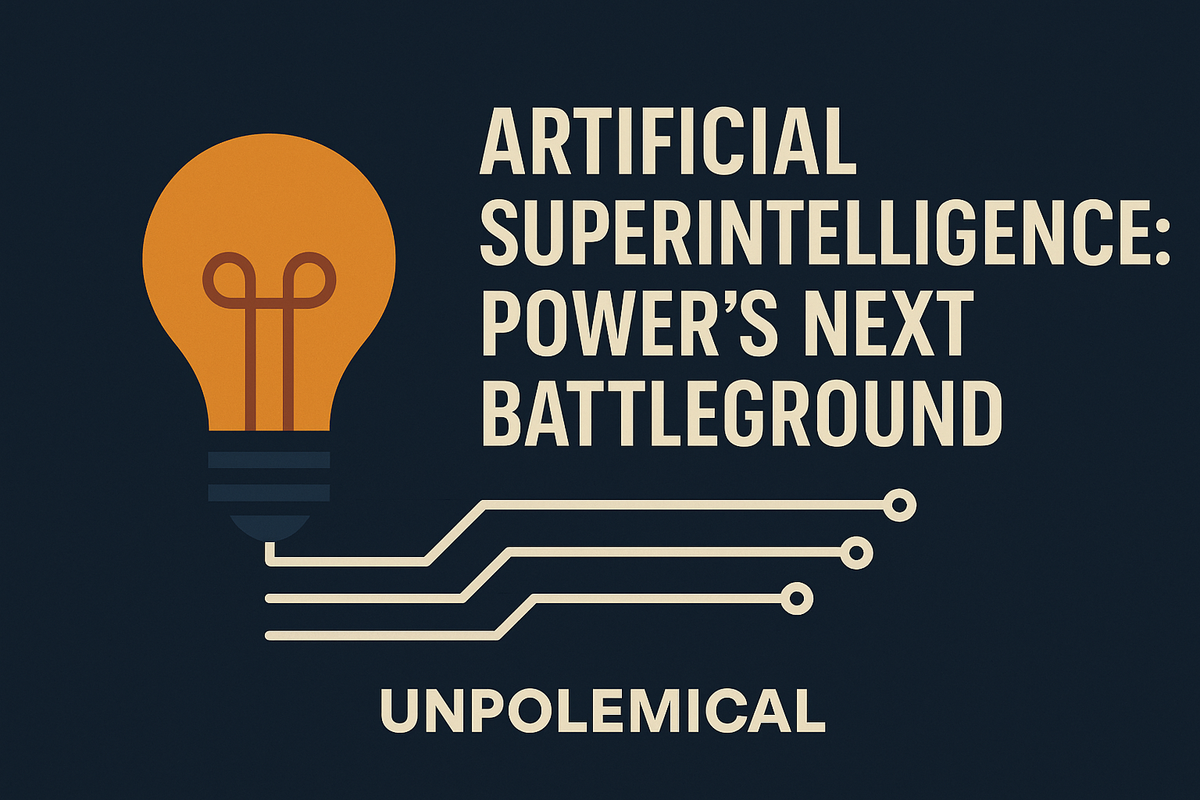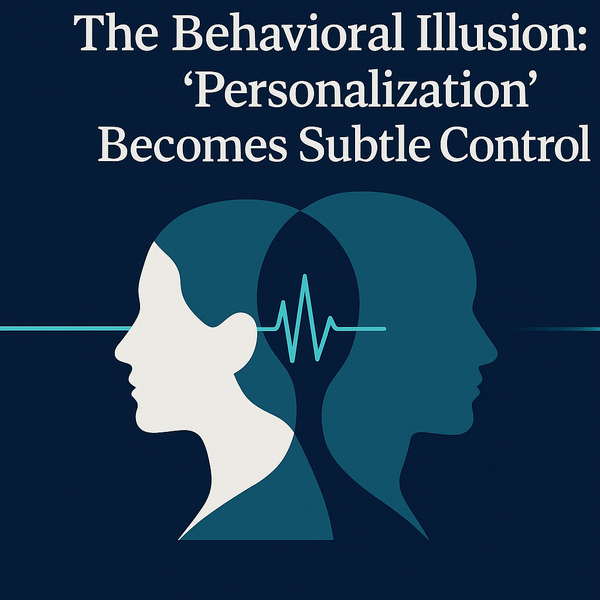Artificial Superintelligence: Power’s Next Battleground

Key Takeaways
- AI’s ceiling isn’t chips — it’s electricity. Fortune
- Data-centre power demand is set to more than double this decade. IEA+1
- The U.S., EU, and China face diverging energy realities — and geopolitical consequences. U.S. Energy Information AdministrationReutersClimate Energy Finance
The signal: energy, not code
In Moonshots with Peter Diamandis, Eric Schmidt frames the near-term AI story in one line: the natural limit isn’t chips — it’s electricity. The episode sets the stakes for an AI era where “superintelligence” becomes a practical infrastructure problem long before it becomes a purely algorithmic one. YouTubeFortune
How big is the load?
Two datapoints anchor the energy shock:
- Data centres’ electricity use will more than double by 2030 to ~945 TWh, with AI the main driver — a Japan-sized footprint. IEA+1
- The U.S. alone may need an extra ~92 GW to power AI build-out — roughly a hundred large nuclear units worth of capacity. FortuneQuartz
This isn’t about model size; it’s about megawatts. The noise says “chips.” The signal says “the grid.” Fortune
United States: innovation meets interconnection
What’s working. The U.S. is adding generation at speed: developers plan ~64 GW of new capacity in 2025, with solar contributing over half (12 GW online in H1, ~33 GW targeted for the year). U.S. Energy Information AdministrationNevada Current
What’s not. Interconnection queues and permitting slow the scale-up just as AI demand spikes. Independent reporting shows regional grids scrambling — from Texas manufacturing “burn-in” power surges to East-Coast data hubs hunting firm supply. Houston Chronicle
Bottom line. America has the capital, technology, and project pipeline — but the binding constraint is still the speed of transmission and firm capacity coming online where AI wants to build. U.S. Energy Information Administration
European Union: green momentum, grid friction
Rapid build-out. The EU expects record renewable additions in 2025 (~89 GW) — ~70 GW solar and ~19 GW wind — on top of 2024’s solar surge (now larger than coal in the EU mix). Reuterspower-technology.comEmber
But the grid lags. Europe’s power system faces connection delays and congestion: connecting large data centres commonly takes 7–10 years in legacy hubs, reshaping where AI infrastructure goes. The European Court of Auditors likewise flags grid readiness as a strategic risk for electrification. EmberReuters
Case in point (UK). Developers are exploring direct hookups to gas pipelines to bypass lengthy grid waits — a stark signal that firm power trumps ideals when timelines bite. Financial Times
Bottom line. The EU leads on climate ambition and adds capacity fast, but without baseload and faster interconnects, AI at scale will drift toward regions that can energize it sooner. ReutersEmber
China: the scale play
Supply at speed. China’s build-rate is extraordinary. In 2024 it added an all-time record of new capacity, and H1 2025 alone saw ~268 GW of new renewables (an eye-popping ~212 GW solar). Wind+solar are already shouldering over a quarter of monthly generation at times. Climate Energy Financepv magazine InternationalEmber
Storage and baseload. New-energy storage hit ~74 GW/168 GWh by end-2024, while nuclear continues to expand with dozens of additional GW under construction. Together, that’s a foundation for 24/7 compute. China Energy Storage Alliance
Bottom line. If advanced chips flow, China’s grid scale becomes a force multiplier — enabling AI capacity build-outs at a speed the West struggles to match. Climate Energy Finance
The Energy Cold War: deterrence and hardening
Schmidt and co-authors have floated Mutual Assured AI Malfunction (MAIM) — a strategy space that borrows from nuclear deterrence: sabotage destabilizing AI projects rather than rush an uncontested “Manhattan Project.” Expect data centres to be militarized assets — sited near firm power, ring-fenced by national security. Business InsiderRAND Corporation
The policy logic follows the electrons. Regions that can guarantee firm, proximate power will pull the AI stack — chips, labs, model training, and downstream industries. Regions that can’t will rent it. Ember
Strategy map: what matters now
For the U.S.
- Unclog interconnections. Treat substations, transmission, and SMRs as critical AI infrastructure. The generation pipeline exists; the bottleneck is grid delivery. U.S. Energy Information Administration+1
- Site where power is. Anchor AI campuses near firm supply (hydro, nuclear, large gas) while backfilling with new-build clean capacity. U.S. Energy Information Administration
For the EU
- Marry ambition to baseload. Record-pace renewables won’t alone feed 24/7 AI load. Faster grid build-outs and re-opened nuclear options are the lever. ReutersEmber
- Fix the queue. A 7–10 year connection cycle cedes the initiative; policy must compress that to ≈1–3 years in priority zones. Ember
For China
- Leverage scale. With capacity and storage ramping, chip access becomes the swing variable; if loosened, China’s power system can absorb AI growth at continental scale. Climate Energy FinanceChina Energy Storage Alliance
Why it matters (for readers)
- Investors: Grid-adjacent assets (transmission, firming, storage, nuclear/SMR) are now AI-beta. Energy is the new compute. IEA
- Operators: Site selection should follow firm MW first, fiber second; permitting timelines are a competitive moat (or trap). Ember
- Policymakers: Infrastructure is destiny. Without fast, firm, local power, you export your AI future to someone else’s grid. Reuters
Sources (selected)
- Eric Schmidt on Moonshots w/ Peter Diamandis (video). YouTube
- Schmidt’s 92 GW U.S. estimate (reporting). FortuneQuartz
- Data-centre demand projections to 2030 (IEA). IEA+1
- U.S. capacity additions 2025 (EIA Today in Energy). U.S. Energy Information Administration
- EU power mix & solar surpassing coal (Ember European Electricity Review 2025). Ember+1
- EU grid bottlenecks & data-centre connections (Ember; ECA review). EmberEuropean Court of Auditors
- UK gas-pipeline workarounds for data centres (FT). Financial Times
- China capacity build-out (NEA via CEF; PV-Magazine; Ember; CNESA storage). Climate Energy Financepv magazine InternationalEmberChina Energy Storage Alliance
- MAIM & AI deterrence (Business Insider summary; RAND commentary). Business InsiderRAND Corporation
Power, not policy, will decide who leads the AI century.





